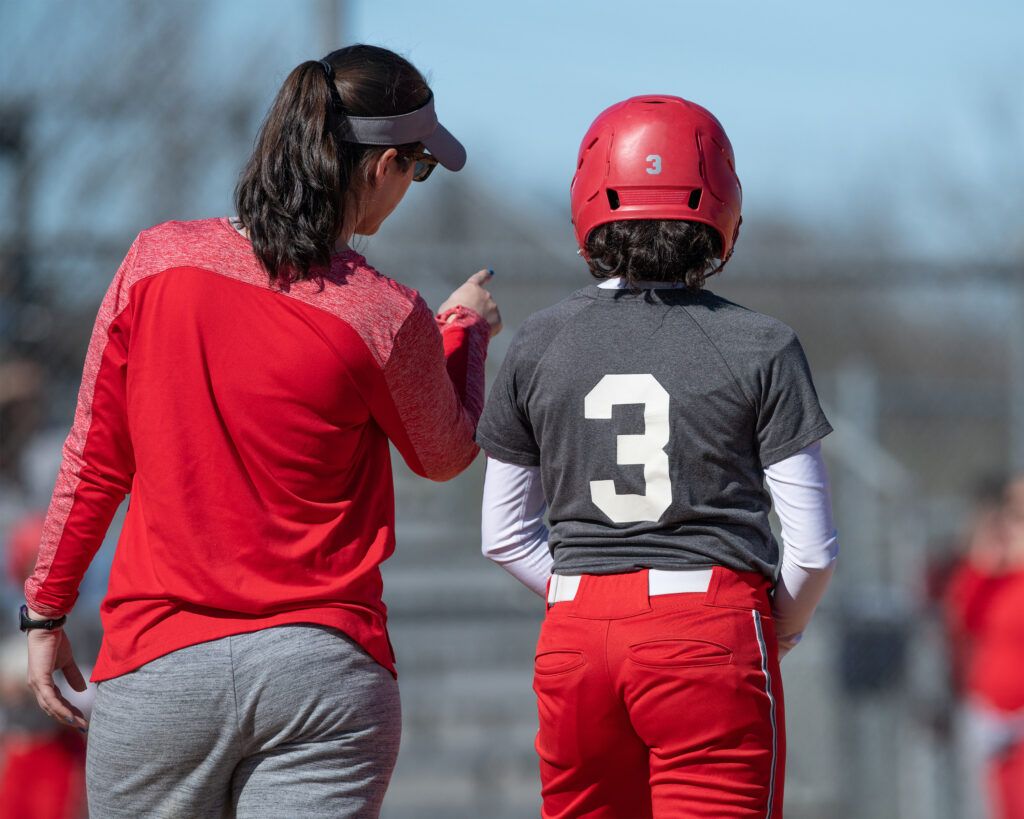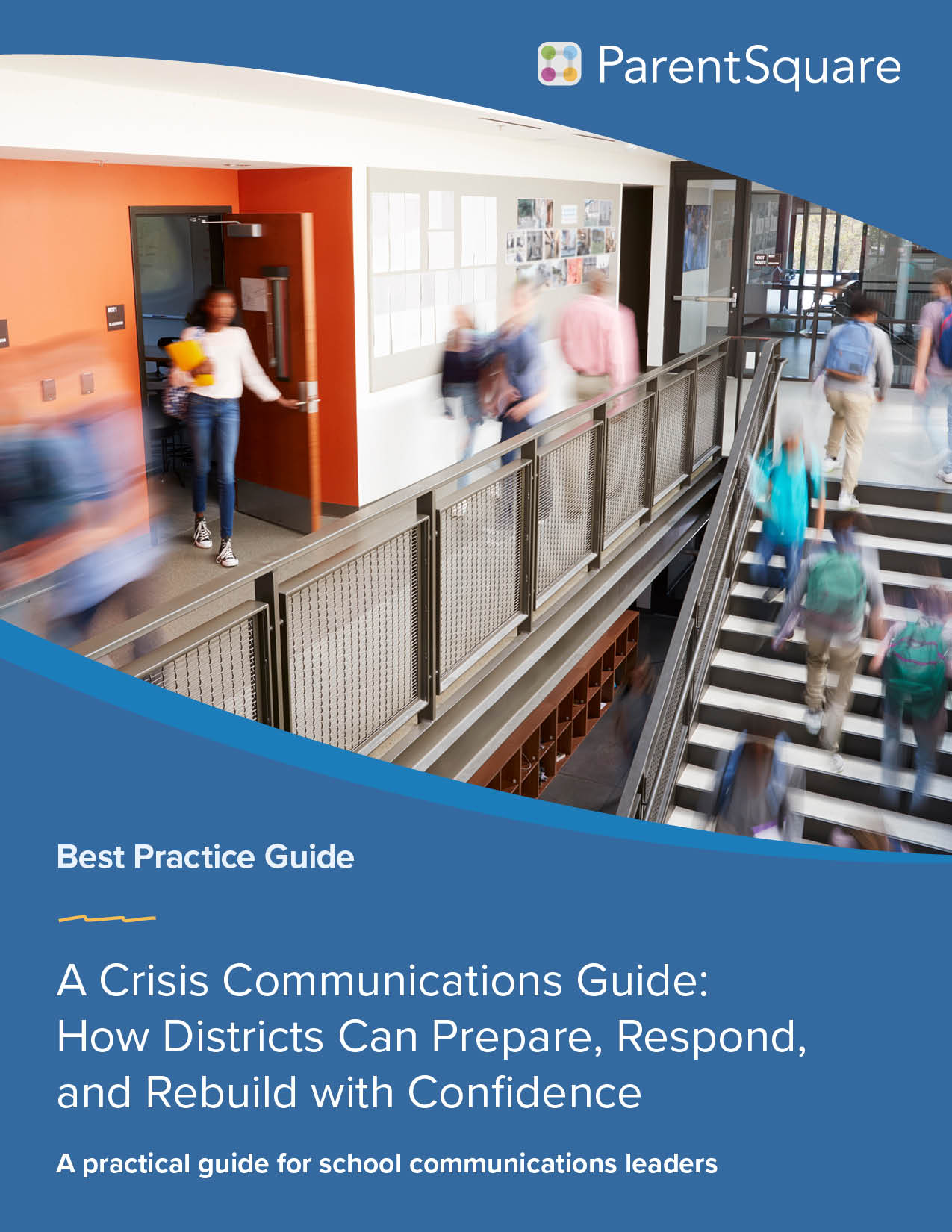Athletics is where so many students find their people.
It’s where they learn to show up, push through, and work for something bigger than themselves. But none of that happens if nobody knows where to go, when to be there, or what changed at the last minute.
That’s where communication comes in.
In a recent conversation hosted by ParentSquare, athletic directors Brent Doty (Wawasee Community Schools, IN) and Kevin Yeckley (Lakota Local School District, OH) sat down with ParentSquare’s Devin Clark to talk about what communication really looks like behind the scenes of K–12 athletics today.

Brent Doty
Wawasee Community Schools, IN

Kevin Yeckley
Lakota Local School District, OH
The theme was clear:
If communication is messy, everything feels harder.
If communication is strong, everyone can focus on the team.
Here’s what they shared—and what it means for your district.
When communication is scattered, everything feels harder
Athletics is a galvanizing force in many schools. It builds pride and identity and gives students a reason to stay connected to school. But as Brent and Kevin were honest about, it can also feel like organized chaos.
Schedules shift. Weather rolls in. Buses run late. Tournament brackets change on a Sunday night. Students play on multiple teams or levels. Parents are juggling work, siblings, and transportation. In that environment, uncertainty is a constant.

Before they centralized communication, both athletic directors were dealing with the same headaches: families who never saw critical messages, coaches trying to keep track of changing phone numbers, and different teams using different apps or text groups. When something went wrong, the question was always the same: “Why didn’t anyone tell us?”
Once they moved to a single, district-approved platform, that dynamic shifted. When a change happens now, Kevin doesn’t have to hope the news filters through a chain of people. He sends one message, targeted to the right group, and families receive it in real time.
He shared a small example that could easily have turned into a big issue. A volleyball matchup ended up being seventh grade only. With about 45 minutes to spare, he sent a quick update to eighth-grade families letting them know they didn’t need to travel that night. No wasted trips. No angry calls the next day. Just clear, timely information to the people who needed it.
It wasn’t magic. It was structure.
Communication and culture go hand in hand
Brent talked at length about how communication and culture are tied together in an athletics program.
When communication is scattered, it creates friction. Parents aren’t sure what’s happening. Students miss practices or arrive late because the information changed and they didn’t see it. Coaches end up spending their evenings answering the same questions again and again. And athletic directors get pulled into avoidable conflicts instead of focusing on leading their programs.
When communication is centralized, predictable, and easy to access, the tone shifts. Families start to trust what they’re seeing and where it comes from. Athletes feel informed and included. Coaches have more time to coach instead of managing logistics. Programs feel more professional and more organized.
Brent shared that once expectations were clear and coaches understood how the system supported them, adoption rose quickly. Today, they’re reaching nearly every family in their athletics program, and “I didn’t know about that” is no longer a daily occurrence.
The toughest opponent: changing coach habits
Every district leader asks the same question: how do you actually get coaches to use the system?
Coaches are used to their routines. Some run group chats, some prefer email, and some still rely on clipboards and phone trees. So Brent and Kevin didn’t pretend this was easy—but they did share what finally worked.

First, they made the conversation about protection, not punishment. Direct texting between coaches and students has become increasingly risky. States like Oklahoma and others are putting clear regulations in place about how staff can communicate with students. District-approved platforms with logging, oversight, and parent visibility are not a “nice-to-have” anymore—they’re non-negotiable.
Framing it that way landed. Coaches care deeply about their athletes and their careers. When they hear, “This protects you and your players,” they listen.
Second, they showed coaches what they get back. Nobody wanted “one more system.” But coaches were tired of maintaining their own lists, chasing parents for updated numbers, and juggling different apps for different teams. Once they saw that using ParentSquare meant they could stop doing all of that—and still reach their families more reliably—adoption stopped feeling like a burden and started feeling like relief.
Finally, they trained coaches like they’d train a team. Brent set up short “101” sessions covering the basics—how to log in, create a team, send a post, send a direct message—and optional “201” sessions for more advanced features. Coaches walked out with something they could use that same day, not a theoretical understanding they’d forget by tomorrow.
Clear communication for busy families (without one more app to juggle)
Another common barrier to change is families who are tired of being asked to download yet another app.
In this model, they don’t have to. Parents can receive and respond to messages by SMS, app, web, or email—whatever fits most naturally into their lives.
For multilingual families, automatic two-way translation changes the experience entirely. Instead of waiting for someone to interpret a message or hoping they caught the details at a meeting, they receive information in their preferred language from the start. They aren’t on the outside looking in; they’re part of the same conversation.
Brent summed it up simply: communication starts to feel like part of everyday life instead of another chore.
Over-communication is real. Boundaries help.

If you’ve ever heard from a parent with three children in three different activities at three different levels, you know over-communication is not theoretical.
Brent and Kevin didn’t dismiss that concern. Instead, they talked about setting norms with staff like:
- Timing matters—most families don’t want non-urgent messages at 9:30 pm
- Subject lines matter—families should be able to tell at a glance whether a message applies to them or not.
- Volume matters—coaches don’t need to send a new post for every small reminder
Kevin shared a story from early on that made everyone smile. One of his cheer coaches loved the platform so much she started sending eight messages a day. It was a good problem to have—engagement, not silence—but it was still a problem. A quick conversation about what to send, when to send it, and how to bundle information made a big difference.
The point wasn’t to restrict communication. It was to make it meaningful.
Tournament season: where communication really gets tested
If regular-season communication is important, tournament communication is where systems really get tested.
Brent used cross-country as an example. When a team qualifies for regionals or state, details come out quickly and not always far in advance. Families need to know when the race is, where to park, how to buy tickets, what time to arrive, and what might change if weather becomes an issue.
In a fragmented system, that can mean a cascade of texts, emails, and social posts that may or may not reach everyone who needs them. In a unified school-home communication system, it’s one message that goes to athletes, families, and staff at once, with all the relevant links and details in one place.
Kevin said they judge how well communication worked in those moments by what they don’t hear. When the phones are quiet and nobody is saying, “We didn’t know,” he knows the communication plan did its job.
Why it matters that athletics lives on the same platform as everything else
Neither Brent nor Kevin wanted athletics communication living in its own separate ecosystem. Families already use and trust ParentSquare for classroom updates, school announcements, and district news. Having athletics in the same place means they’re not juggling yet another tool or trying to remember where to check for which child.
They also appreciated the operational benefits. Contacts are synced from the SIS, so coaches aren’t managing lists by hand. Messages can go out as texts, emails, app notifications, or all three. Virtual Phone lets staff call families using a school-associated number while still keeping a record of the conversation. Forms and permissions can be collected digitally, rather than on crumpled papers in backpacks.
Some districts, like Kevin’s, ask coaches to manage their own team rosters in ParentSquare. Others, like Brent’s, handle that centrally in the athletics office so coaches have one less thing to do. The platform supports both models. What matters is that everyone knows where communication lives and how to use it.
Underneath the features is a simple idea: athletics communication shouldn’t be off in a corner. It should be part of the same trusted infrastructure families already rely on every day.
Want the full story? Keep the momentum going.
This recap only captures some of the stories and strategies Brent and Kevin shared.
In the full conversation, they go deeper into how to set expectations with coaches, what state-level rules around communication are starting to look like, how to support multilingual and highly mobile families, and how to introduce a new platform without overwhelming staff.
🎧 Listen to the full “Coach’s Guide to Winning Team Communication” webinar to hear the stories and examples in their own words.

